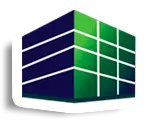Building demolition is critical for urban development, especially in growing communities like Tradition in Port St. Lucie, Florida.
As the area continues expanding, the need for efficient, safe, and environmentally friendly demolition methods has become a top priority. For the same reason, modern technology has evolved to address this concern, transforming the demolition industry and offering innovative solutions that minimize risks, reduce environmental impact, and maximize efficiency.
Next, we will explore the best technological advances for building demolition projects in Tradition, Port St. Lucie, and how they are defining the future of construction and urban renewal.
High-Reach Excavators
High-reach excavators are among the most advanced equipment used in modern demolition projects. These machines feature extended arms that can reach heights of up to 100 feet or more, making them ideal for demolishing tall structures such as office buildings, apartments, and industrial facilities.
In Tradition, where urban development is on the rise, high-reach excavators are a precise and controlled option to take down buildings without causing excessive damage to surrounding structures. The benefits of high-reach excavators include their ability to work in tight spaces, their precision in targeting specific sections of a building, and their minimal noise and dust emissions compared to traditional demolition methods, which makes them an excellent choice for projects in densely populated areas like Tradition, where minimizing disruption to the community is a top priority.
Robotic Demolition Equipment
Robotic demolition equipment has transformed the industry by offering a safer and more efficient alternative to traditional methods. These remote-controlled machines feature powerful tools such as hydraulic breakers, crushers, and shears, which allow them to dismantle structures with high precision and minimal human intervention.
This technology is particularly useful for projects that involve hazardous materials, such as asbestos or lead, since it minimizes the risk of exposure to workers. In Tradition, where environmental sustainability is a growing concern, robotic demolition equipment has become a popular eco-friendly option since these machines produce less noise, dust, and vibration compared to conventional methods, which in addition make them ideal for projects in residential or sensitive areas.
Furthermore, their ability to operate in tight spaces makes them a versatile option for a wide range of demolition procedures.
Selective Demolition Techniques
Selective demolition, also known as deconstruction, implies carefully dismantling a building to recover reusable materials such as wood, metal, and concrete. This method has become very popular in Port St. Lucie as part of the city’s efforts to promote sustainability and reduce construction waste.
Although it requires skilled labor and specialized equipment, it also offers significant environmental and economic benefits. In Tradition, where new buildings often replace older structures, selective demolition can significantly reduce the environmental impact of construction projects.
By recycling materials, developers lower their costs and contribute to a more sustainable building industry. This approach aligns with the community’s commitment to preserving its natural beauty and biodiversity.
Dust and Noise Suppression Systems
Dust and noise are the most significant challenges associated with building demolition. In Tradition, where residential and commercial areas are often in close proximity, controlling these factors is essential to ensure minimal disruption for residents.
Modern dust and noise suppression systems use advanced technologies including water misting, foam sprays, and sound barriers to minimize the impact of demolition activities. These systems are highly effective when used in conjunction with other demolition technologies, such as high-reach excavators and robotic equipment.
Building Information Modeling (BIM)
Building Information Modeling (BIM) is a digital tool that allows demolition teams to create detailed 3D models of structures before demolishing them. This technology provides accurate information about the building’s design, materials, and structural integrity, allowing teams to plan the demolition process more effectively.
In Tradition, where many buildings have unique architectural features, BIM would be crucial to preserve historical elements while ensuring the safe removal of the structure. BIM also enhances communication and collaboration among the demolition work team, including architects, engineers, and contractors.
This technology also allows contractors to identify potential challenges and develop solutions before the demolition starts, reducing the risk of delays and unforeseen costs.
Leveraging The Best Demolition Technology in Tradition
The days of wrecking balls and brute force are pretty far away for the demolition industry. Today, advanced technologies, like high-reach excavators, implosion, robotic equipment, selective demolition, dust and noise suppression systems, and BIM are transforming the way buildings are demolished.
In Tradition, Port St. Lucie, these innovations are helping to transform urban development, making it more environmentally friendly and responsible with the community. As the city continues growing, these technologies will become essential to ensure that demolition projects are completed with minimal disruption and also minimal impact on the environment, guaranteeing sustainability and preserving the surrounding areas from damages and unnecessary disturbance.
By investing in the best demolition technologies, Tradition can ensure a brighter, more sustainable urban and architectural future.


